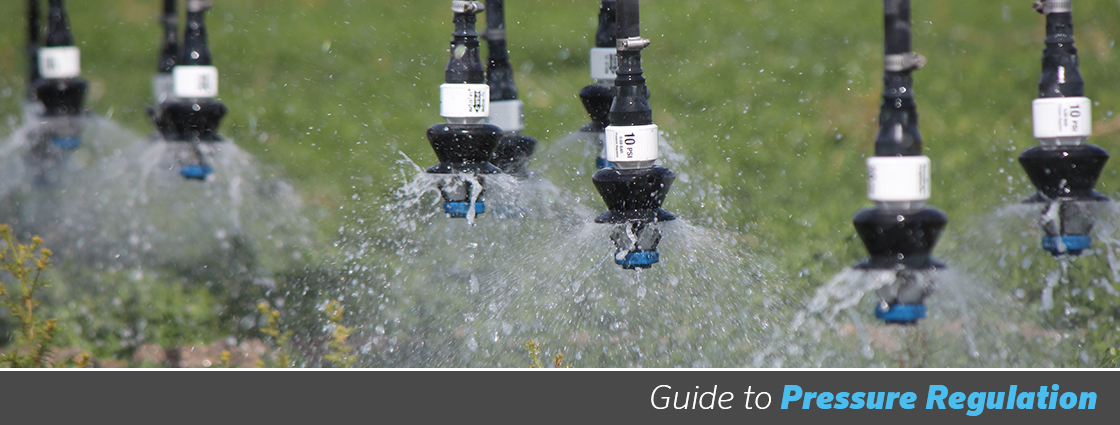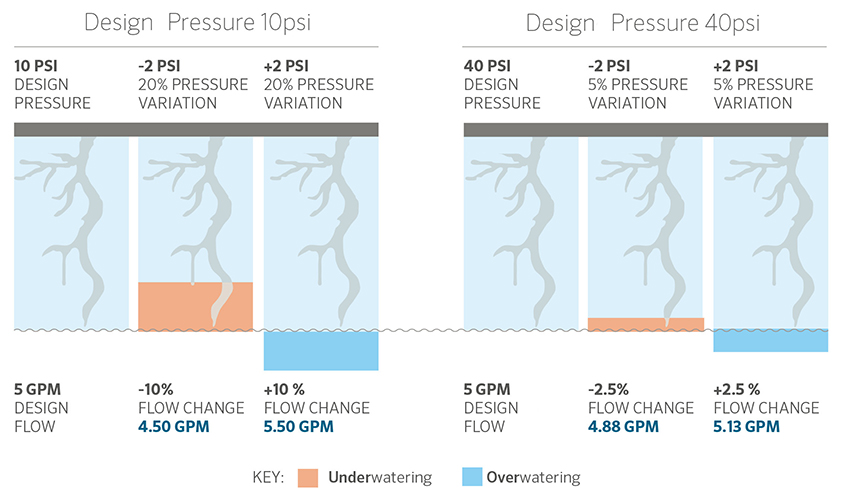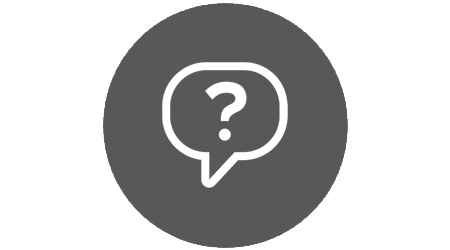
Pressure regulators are the unsung heroes of your irrigation system. These devices maintain the system's desired performance by controlling excessive inlet pressure. Thus, they ensure consistent outlet pressure running through your sprinklers.
Every irrigation system must take a predetermined amount of water and distribute it uniformly at a specific flow and pressure range. For this reason, the system pressure control is critical. You need pressure regulators to achieve the intended distribution pattern and application rate.
If you do not control the system pressure, it can negatively affect the sprinkler performance. Without regulators, the throw radius can alter, fitting, and emitters could even take damage or blow out of the tubing. It may also impact the irrigation system's application of fertilizers, chemicals, and nutrients.
Pressure regulation is often a misunderstood topic. Some growers still believe they do not need regulation if their fields are flat. Others may struggle to determine when a pressure regulator may be malfunctioning.
That is why we created the guide to pressure regulation. This guide will give you an overview of how a pressure regulator works, how to select a pressure regulator, troubleshooting tips, and answers to frequently asked questions.
HOW PRESSURE REGULATORS WORK
An irrigation water pressure regulator is capable of automatically adjusting its opening area as water enters the device at fluctuating pressures. This opening changes proportionately to help assure the outlet pressure (the water that exits the pressure regulator) stays at a relatively constant level.
This keeps the inlet pressure for sprinklers and other emitters within an acceptable range to help keep the water flow at a steady rate.
Pressure has a direct impact on flow. All it takes is a ~20% pressure change to create a ~10% flow variation. The lower a sprinkler's design pressure is, the more critical it is to control pressure in order to maintain its desired flow rate.

For example, a pressure variation of 2 psi (0.14 bar) on a sprinkler designed to operate at 10 psi (0.69 bar) is equivalent to a 20% pressure variation. This alters the flow by 10%.
That is why almost every irrigation system benefits from pressure regulation.
The most common reasons of pressure deviations in the field are elevation differences, end guns or corner arms cycling on/off on a center pivot system, and irrigation zones in a nursery or open field cycling on/off. Pressure issues are also common when systems use multiple water sources such as wells, rivers and lakes. Water levels can change, which alters the pressure required to move the water.
HOW DO I SELECT THE RIGHT PRESSURE REGULATOR?
Choosing a pressure regulator model is a relatively simple process. There are four main factors you need to consider:
- Sprinkler pressure requirements and maximum inlet pressure
- Sprinkler flow that falls within the regulator’s designed flow range
- Inlet and outlet connection size
- Any specific application requirements like those of mining installations
Pressure regulators are designed to operate at a specific flow and pressure rate. Each model also comes with specific connection sizes and styles (NPT, BSPT, hose, slip).
The Senninger PSR-2, for example, operates at a medium flow rate of 0.5 - 15 gpm (114 - 3407 L/hr) and can handle inlet pressure up to 130 psi (8.96 bar). If your maximum inlet pressure and flow rate are above this range, you should consider another pressure regulator model such as the PMR-MF.
Sometimes your choice of pressure regulator may come down to the inlet and outlet connection or even a unique feature. For example, the PRU is the only Senninger pressure regulator with a 2-inch connection.
| PRLG | PRL | PSR-2 | PMR-MF | PR-HF | PRU | PRLV | PRXF-LV | |
| Flow Range | ||||||||
| 0.5 - 7 gpm (114 - 1590 L/hr) |
0.5 - 8 gpm (114 - 1817 L/hr) |
0.5 - 15 gpm (114 - 3407 L/hr) |
2 - 20 gpm (454 - 4543 L/hr) |
10 - 32 gpm (2271 - 7268 L/hr) |
20 - 100 gpm (4543 - 22713 L/hr) |
0.5 - 18 gpm (114 - 4088 L/hr) |
15 - 75 gpm (3407 - 17034 L/hr) |
|
| Preset Operating Pressure | ||||||||
| 10 - 40 psi (0.69 - 2.76 bar) |
6 - 40 psi (0.41 - 2.76 bar) |
6 - 50 psi (0.41 - 3.45 bar) |
6 - 60 psi (0.41 - 4.14 bar) |
10 - 50 psi (0.69 - 3.45 bar) |
10 - 60 psi (0.69 - 4.14 bar) |
10 - 60 psi (2.07 - 4.14 bar) |
20 - 60 psi (1.38 - 4.14 bar) |
|
| Maximum Inlet Pressure | ||||||||
| 120 psi (8.27 bar) |
120 psi (8.27 bar) |
130 psi (8.96 bar) |
140 psi (9.65 bar) |
130 psi (8.96 bar) |
140 psi (9.65 bar) |
125 psi (8.62 bar) |
125 psi (8.62 bar) |
|
| Inlet Sizes | ||||||||
| 3/4" F hose, | 3/4" F NPT | 3/4" F NPT | 3/4" F NPT | 1-1/4" F NPT | 2" F NPT | 3/4" F NPT | 3" F slip | |
| 3/4" M NPT | 3/4" F hose | 1" F NPT | 1-1/4" F BSPT | 2" F BSPT | 1" F NPT | |||
| 1" F BSPT | ||||||||
| Outlet Sizes | ||||||||
| 3/4" M hose | 3/4" F NPT | 3/4" F NPT | 3/4" F NPT | 1" F NPT | 2" F NPT | 3/4" F NPT | 3" F slip | |
| 3/4" M NPT | 1" F NPT | 1-1/4" F NPT | 2" F BSPT | 1" F NPT | ||||
| 1" F BSPT | 1" F BSPT | |||||||
| 1-1/4" F BSPT | ||||||||
The comparative chart above makes it easy to scan through the requirements listed above and find the appropriate model for your installation. Though normally, irrigation design software will provide the necessary parameters for pressure regulator selection.
Remember: pressure regulators require at least 5 psi (0.41 bar) above the preset pressure in order to regulate at that pressure. That means if you’re using a 15 psi (1.03 bar) pressure regulator, your inlet pressure to the regulator must be at least 20 psi (1.38 bar).
Limit Valves
If you need a pressure regulator upstream (before) of a shut-off valve, then you should opt for a pressure regulating limit valve.
Pressure regulating limit valves are designed to control pressure when there is no water flow through the device. In contrast, a standard pressure regulator will not regulate without flow and must be installed downstream (after) all shut-off valves.
Filter Regulator
Senninger created its all-in-one filter regulator to help prevent clogging of the small nozzles on the initial spans of a center pivot. It combines the reliability of the Senninger black and white pressure regulators with the choice of screen models based on nozzle size. This solution integrates filtration and pressure control into a single item to save money, make life easier, and help guarantee system operation.
TROUBLESHOOTING PRESSURE REGULATORS
An irrigation system pressure regulator can last for years. However, the conditions under which pressure regulators operate influence their lifespan. That is why Senninger encourages all irrigators to check their pressure regulators at least every three years.
Regulators installed on systems that run for long hours throughout the season will wear faster than those on systems that run for fewer hours. Systems with high iron content in the water or systems with installation errors will see their pressure regulators wear out faster as well.
So how can you tell if your pressure regulator is working?
The easiest way to assess if a pressure regulator is functioning as designed is to visually inspect your system while it’s running. The most common signs of bad or faulty pressure regulators include:
- Misting or overwatering in some areas
- Leakage between the device’s housings
- Increased water and energy consumption
If a pressure regulator has been malfunctioning for some time, you might also notice uneven crop growth in the area near the pressure regulator due to the sprinklers likely operating outside their flow and pressure range. This could be dry spots near the head, overwatering in a doughnut-shaped pattern, and streaking in the field.
If you would like to test individual pressure regulators, the easiest way to get an exact reading is to install a pressure gauge on each side of the regulator. You can measure the inlet pressure with a pressure gauge above the regulator, and the outlet pressure with a gauge below the regulator.

If a pressure regulator delivers an outlet pressure significantly above its rating, it should be replaced. If you are unsure if the pressure regulator still needs replacing, you can always input the results of the pressure gauge test into the SennREG mobile app.
The app first shows you the correct output pressure for your pressure regulator model based on your system’s input pressure, nozzle sizes, and flow. Then it asks you to input your actual output pressure and shows you if the pressure regulator is operating within range, nearing the end of its life, or if it needs to be replaced.
FAQ
DO I NEED A PRESSURE REGULATOR WITH FLAT LAND?
Yes! Elevation is just one of the many things that cause pressure fluctuations. Your system pressure can change due to pressure loss through pipe fittings, end guns cycling on/off on a center pivot, or zones shutting off or on in a nursery or open field.
DO I NEED A PRESSURE REGULATOR FOR DRIP SYSTEMS?
Drip installations operate at relatively low pressures. In low-pressure systems, pressure management is crucial because even a small change in pressure can significantly impact the application rate. We recommend using a pressure regulator for drip irrigation.
HOW DOES PRESSURE AFFECT MY FLOW RATE?
Higher pressures increase flow along any pipe. As that flow increases, water velocity increases as well. When water is rushing through a pipe at high velocities, the interior walls of the pipe create friction against it, which causes pressure loss.
HOW DO I INSTALL A PRESSURE REGULATOR?
Always install pressure regulators downstream from all shut-off valves in the proper direction. Each model has a directional arrow on the side that shows the direction of the flow. This arrow should point downstream, toward the sprinklers and emitters.
HOW LONG DOES A PRESSURE REGULATOR LAST?
Senninger pressure regulators are built using high-impact engineering grade thermoplastics, but like sprinklers, they do not last forever. It is impossible to determine exactly how long an individual pressure regulator will last because this all depends on the irrigation system’s operating conditions. Irrigators are encouraged to check their pressure regulators at least every three years.
WHAT IS HYSTERESIS?
Hysteresis refers to the difference in pressure regulator performance while the inlet pressure is increasing versus decreasing. If a pressure regulator has very low hysteresis, this means it is able to maintain a very similar performance while the system pressure increases versus when it decreases. Read our article on Hysteresis for a more detailed explanation of this phenomenon.
WHAT DOES ACCURACY OF +/- 6% MEAN?
No pressure regulator is perfect, but the ones with the highest accuracy are better at maintaining the desired outlet pressure. A Senninger pressure regulator with an accuracy of +/- 6% will regulate more accurately than a pressure regulator with an accuracy of +/- 12%, for example. At +/- 12% accuracy, a 20 psi (1.38 bar) pressure regulator will maintain outlet pressure at a range of 17.4 to 22.4 psi (1.20 to 15.4 bar). A Senninger pressure regulator would maintain outlet pressure at a more accurate range of 18.8 to 21.2 psi (1.30 to 1.46 bar).
WHY DO I NEED AN ADDITIONAL 5 PSI INLET PRESSURE?
Pressure regulators do not function until the inlet pressure exceeds the rated operating pressure by at least 5 psi or 0.34 bar to compensate for friction loss. Friction loss within a pressure regulator is caused by springs, seals, and the internal wall surface.

Become an expert on pressure regulation by signing up for our FREE online training courses today. Our in-depth course will teach you advanced pressure regulation concepts, how to install pressure regulators in different irrigation systems, how to recommend a model to customers, identify problems and troubleshoot with ease.
All our courses are certified by the Irrigation Association and worth one continuing education credit (CEU) toward your annual re-certification.













